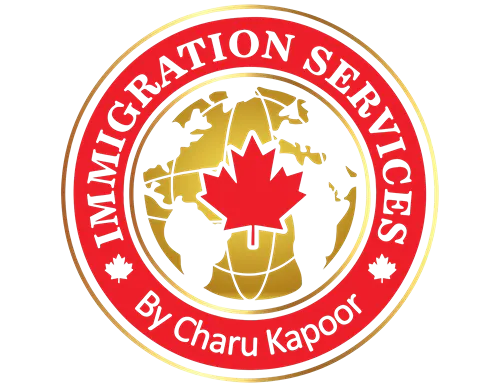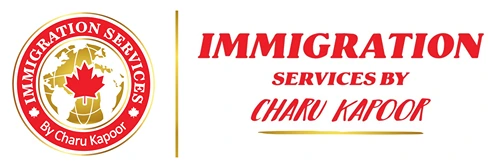Rural and Northern Immigration Pilot
Introduced in 2019, the Rural and Northern Immigration Pilot emerged as a strategic endeavor aimed at invigorating economic development in rural and northern regions of Canada through the attraction of skilled workers. This visionary program has been carefully designed to address the unique demographic and economic challenges faced by these areas, fostering sustainable growth and vitality.
Operating across a diverse array of provinces and territories—namely Ontario, Manitoba, Saskatchewan, Alberta, British Columbia, Nunavut, the Northwest Territories, and Yukon—the program casts a wide net, extending its benefits to various corners of the nation. By expanding beyond the urban centers and into rural and northern locales, the pilot embarks on a mission to leverage the talents of skilled immigrants to bolster local economies and enhance community vibrancy.
At its core, the Rural and Northern Immigration Pilot seeks to cultivate a symbiotic relationship, aligning the aspirations of skilled workers with the needs of these regions. By providing newcomers with pathways to fulfilling careers while simultaneously addressing the demands of communities hungry for skilled talent, the program embodies a comprehensive approach to economic enrichment.


Discover your Canadian
Immigration Options
What is Rural and Northern Immigration Pilot?
The Rural and Northern Immigration Pilot stands as a grassroots initiative, firmly rooted in community-driven principles. This innovative program has been strategically crafted to disperse the advantages of economic immigration across smaller, often overlooked, communities. It pioneers a dedicated pathway to Canadian permanent residence for skilled foreign workers who aspire to contribute their expertise and talents to these participating locales.
At its essence, the Rural and Northern Immigration Pilot is a resolute response to the challenges faced by smaller communities grappling with labor shortages and aging populations. By introducing a five-year federal immigration pilot, the program endeavors to inject renewed energy and vigor into these communities. Such regions often struggle to attract and retain new immigrants, which in turn can affect their growth and vitality. Thus, the pilot program’s focus is not only on bridging the gap between skilled workers and available job opportunities but also on nurturing a symbiotic relationship that rejuvenates the economic and social fabric of these communities.
As a beacon of inclusivity and collaboration, the pilot unites federal immigration authorities, provincial governments, and local communities in a shared effort to bolster economic prosperity and community vibrancy. By offering a tailored pathway to permanent residence for skilled foreign workers, the Rural and Northern Immigration Pilot actively addresses the unique needs and aspirations of these smaller locales, charting a course towards mutual advancement and shared success.
Eligibility for Rural and Northern Immigration Pilot?
At its heart, the program is driven by the collective efforts of communities with a far-reaching vision to equitably distribute the advantages of immigration, fostering prosperity in regions that might otherwise be overshadowed.
For a community to become an active participant in this innovative initiative, certain criteria must be met:
- The community’s population should not exceed 50,000 inhabitants, and it should be situated at a distance of at least 75 kilometers from the core of a Census Metropolitan Area, OR
- The population can extend up to 200,000 residents, but the community must exhibit a remote status according to the Statistics Canada Remoteness Index, indicating its distance from larger urban centers.
The journey towards attaining Canadian permanent residence through the Rural and Northern Immigration Pilot follows several pivotal steps:
- Aspirants must meticulously assess their alignment with both the federal government’s eligibility prerequisites and the unique criteria specified by the participating community they aspire to join.
- Identifying an eligible job opportunity with an employer situated within one of the pilot’s actively engaged communities becomes paramount.
- For those fortunate enough to secure a job offer, the next step involves formally submitting an application for community recommendation.
- Once armed with a recommendation from the community, candidates can proceed to initiate their application for permanent residence, culminating in their endeavor to become valued members of the Canadian society.
This program embodies a symbiotic relationship between aspiring candidates, communities seeking growth, and the broader federal immigration framework. By encapsulating the spirit of inclusiveness and shared progress, the Rural and Northern Immigration Pilot demonstrates the potency of collaboration in shaping a more equitable and thriving immigration landscape.
Federal Government Eligibility Requirements
The Federal Government of Canada has established a set of eligibility requirements that serve as the foundation for various immigration pathways. These criteria encompass factors such as work experience, language proficiency, education, age, and adaptability. Aspiring immigrants must demonstrate their alignment with these prerequisites to qualify for programs aimed at economic immigration, family sponsorship, and other avenues of permanent residency. These rigorous standards ensure that successful candidates possess the attributes needed to contribute to the Canadian society and economy while adhering to the country’s values and principles.
#1 – Work Experience/International Student Exemption
To qualify for the Rural and Northern Immigration Pilot, candidates need to fulfill specific criteria related to work experience or education obtained within the recommending community.
Work Experience
Applicants should possess at least one year (equivalent to 1,560 hours) of full or part-time work experience within the last three years. This work experience doesn’t need to be continuous but should be accrued over the past three years. The work must pertain to a single occupation, although it can involve different employers. The experience should encompass the majority of primary duties and all essential duties as outlined in the National Occupational Classification (NOC). Unpaid and self-employed hours are not considered towards this requirement.
International Students
International students may be exempted from the work experience criterion provided they meet the following prerequisites:
Scenario 1:
- Completion of a minimum two-year post-secondary program within the recommending community.
- Being a full-time student throughout the entire two-year period or longer.
- Receiving the credential no more than 18 months prior to the permanent residence application date.
- Presence within the community for at least 16 of the last 24 months spent studying for the credential.
Scenario 2:
- Graduation with a master’s degree or higher.
- Full-time enrollment throughout the duration of the degree program in the recommending community.
- Receipt of the degree no more than 18 months before the date of permanent residence application.
- Continuous stay within the community for the entire length of the study period.
These provisions are designed to recognize and accommodate candidates with diverse backgrounds, ensuring that both those with work experience and international students who have contributed to the local community have an opportunity to access permanent residency through the program.
#2 – Language Requirements
Applicants are required to fulfill the language proficiency standards set by the Canadian Language Benchmarks (CLB) or Niveaux de compétence linguistique canadiens (NCLC), corresponding to the National Occupational Classification (NOC) category of their intended job.
The minimum language proficiency criteria for each NOC category are as follows:
- NOC 0 and A: CLB/NCLC 6
- NOC B: CLB/NCLC 5
- NOC C and D: CLB/NCLC 4
These language requirements are established to ensure that candidates possess the necessary communication skills to effectively contribute to their chosen occupation in Canada. Depending on the nature of their job and its associated NOC category, applicants must meet these specified language benchmarks as part of their eligibility for the program.
#3 – Educational Requirements
Applicants are required to hold either a Canadian high school diploma or an equivalent foreign educational credential, validated by an accredited educational credential assessment (ECA) report.
To ensure fairness and consistency in assessing foreign educational credentials, an ECA report is necessary to determine the equivalency of the applicant’s educational qualification to the Canadian standard. This process helps immigration authorities ascertain the educational background of the candidate and ensures that they meet the required educational criteria for the immigration program. By providing an accredited ECA report, candidates offer a clear and standardized representation of their educational attainment, enhancing the transparency and accuracy of the immigration process.
#4 – Settlement Funds
Applicants are required to demonstrate their financial capacity to provide for themselves and their family members during their initial settlement period in the community. This financial support extends to family members who may not be accompanying them to Canada.
The settlement funds requirement is an important aspect of the immigration process, ensuring that newcomers have the means to establish themselves in their new environment without burdening the Canadian social support systems. By showcasing their ability to cover living expenses, candidates exhibit their readiness to integrate smoothly into Canadian society and contribute positively to the economy.
It’s worth noting that individuals who are already legally employed in Canada are exempt from the settlement fund requirement. This exemption recognizes their active contribution to the Canadian workforce and their ongoing financial stability, reducing the need for additional settlement funds.
#5 – Intention to Reside
To be eligible to participate in the pilot program, it is a requirement that you have concrete plans to reside within the designated community. This condition ensures that the program benefits individuals who genuinely intend to contribute to the economic and social growth of the community. The program’s emphasis on living in the community aligns with its community-driven approach, fostering stronger connections between newcomers and their chosen places of residence. This requirement also helps address the specific needs and priorities of smaller communities, ensuring that the program’s objectives are effectively met.

